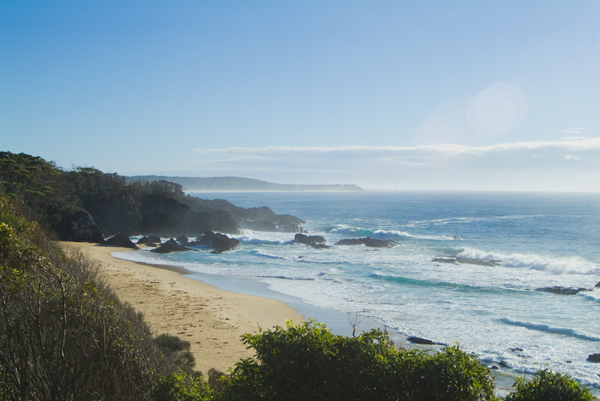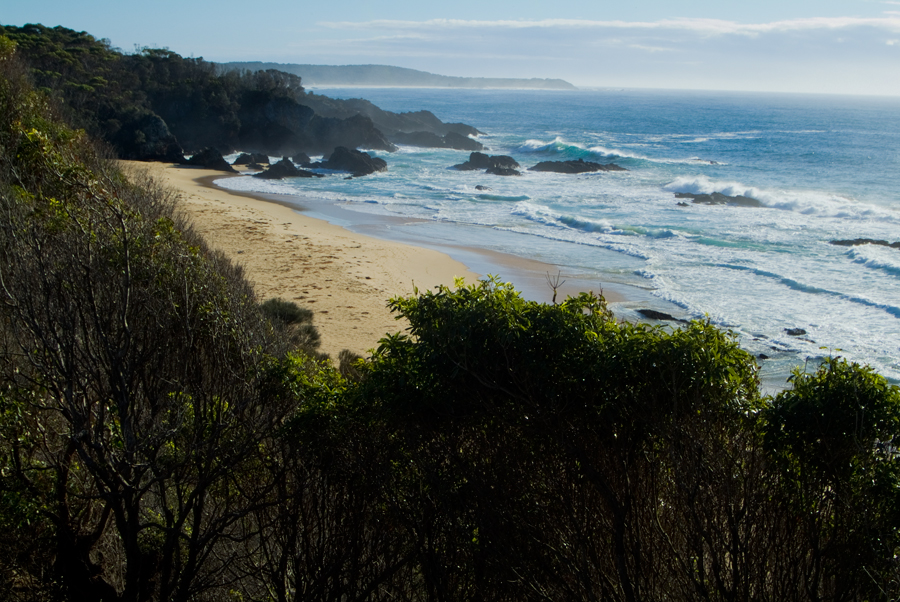
It is common for the aesthetically uninformed photographer to fill a large area of the frame with visually bland areas that don’t contribute to the image and produce predictably boring images – this might be a huge area of sky, an expanse of grass or sand at a beach. In this image the ocean and sky visually compete with each other. |

When you frame such scenes ask how they contribute to the image – if the subject of the photo is the sky then - make a feature from it. Other wise reduce it down so the emphasis falls on the element that you feel the image is about.
In this image of the same scene, the dark area of foliage frames the ocean - also look how the faint circles of lens flare in the sky on the right of the the first image have been framed out |